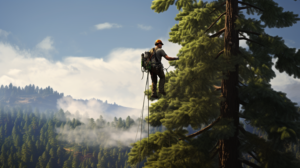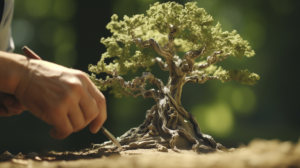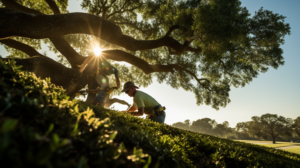Tree Trimming
Here at our team, we know that taking care of our trees is essential for a thriving outdoor space. That’s why tree trimming is an important practice to maintain the health and aesthetics of your landscape.
In this article, we’ll explore the benefits of tree trimming, discuss the necessary tools and equipment, highlight the best times of the seasons to trim trees, share techniques for proper trimming, and provide insights on hiring a professional tree trimmer.
Join us as we delve into the world of tree maintenance and discover how you can create a beautiful haven in your own backyard.
Key Takeaways
- Tree trimming promotes healthy growth and enhances the aesthetics and curb appeal of trees.
- It reduces the risk of falling branches, increases sunlight penetration, and improves air circulation within the canopy.
- Proper tree trimming techniques include thinning, heading back, directional pruning, and strategic pruning for shaping.
- Hiring a professional tree trimmer ensures safety, saves money in the long run, and provides expertise and proper equipment.
Benefits of Tree Trimming

One of the benefits of tree trimming is that it helps to promote healthy growth. Regular pruning removes dead or diseased branches, allowing the tree to focus its energy on new growth and maintaining overall tree health.
Trimming also improves aesthetics and curb appeal by shaping the tree and removing any unsightly or overgrown branches. This not only enhances the beauty of your property but also creates a sense of belonging within your community.
Safety is another important aspect of tree trimming as it reduces the risk of falling branches during storms or strong winds, protecting both people and property.
Additionally, proper trimming can enhance sunlight penetration and air circulation within the canopy, creating an optimal environment for the tree’s health and promoting fruit production in fruit-bearing trees.
Tools and Equipment for Tree Trimming
 There’s a wide variety of tools and equipment used for tree trimming. Here are some essential ones you should know:
There’s a wide variety of tools and equipment used for tree trimming. Here are some essential ones you should know:
-
Safety precautions: Before starting any tree trimming work, it’s crucial to wear appropriate protective gear such as gloves, safety glasses, and a hard hat. This ensures your safety throughout the process.
-
Essential tree pruning tools: Pruning shears or secateurs are commonly used for small branches, while loppers are ideal for thicker branches. A pruning saw is necessary for larger limbs that cannot be reached with other tools.
-
Efficient branch removal: To remove branches efficiently, a pole pruner or a chainsaw with an extension pole can be utilized. These tools allow you to reach higher areas without the need for climbing up the tree.
-
Proper ladder usage: When using a ladder for tree trimming, make sure it is sturdy and placed on even ground. Always maintain three points of contact (two hands and one foot) while climbing and avoid overreaching.
Maintenance of pruning tools is also important to ensure their effectiveness and longevity. Regularly clean blades, oil moving parts, and sharpen cutting edges as needed.
When Is the Best Time of the seasons to Trim Trees
The best time to trim trees is during the dormant season when there is minimal growth. This is typically in late winter or early spring, before the new buds start to form. Pruning during this time allows for optimal healing and encourages healthy growth in the upcoming growing season. It’s important to note that different tree species have specific pruning requirements, so it’s always a good idea to consult with a professional arborist for guidance.
To help you understand the importance of seasonal tree care and provide some tree maintenance tips, we have created a table below:
| Tree Pruning Dos | Tree Pruning Don’ts | DIY Tree Trimming Tips |
|---|---|---|
| – Trim dead or diseased branches | – Over-prune, as it can weaken the tree | – Use proper tools and safety equipment |
| – Remove crossing or rubbing branches | – Cut too close to the trunk | – Start with small cuts and assess before removing more |
| – Maintain proper branch spacing | – Top off the tree (this can lead to weak growth) | – Research and learn about different pruning techniques |
Techniques for Proper Tree Trimming
To ensure you trim your trees properly, it’s important to learn and practice different pruning techniques. Here are some essential methods for proper tree trimming:
-
Pruning methods: Familiarize yourself with different pruning techniques such as thinning, heading back, and directional pruning.
-
Branch cutting: When cutting branches, make sure to use sharp tools and make clean cuts just outside the branch collar.
-
Crown reduction: If your tree has overgrown branches or an imbalanced crown, consider crown reduction to maintain its shape and health.
-
Tree shaping: Use strategic pruning to shape your tree into a desired form or size.
Remember to take safety precautions while trimming trees by wearing protective gear and using sturdy ladders or harnesses when needed.
Hiring a Professional Tree Trimmer
If you’re not confident in your abilities, it’s best to hire a professional tree trimmer for the job. Tree trimming requires expertise and proper equipment to ensure the safety of both the trimmer and the tree itself. When considering the cost, hiring a professional may seem more expensive upfront, but it can save you money in the long run by preventing potential damages caused by improper trimming techniques.
To find reputable trimmers, ask for recommendations from friends or neighbors who have had positive experiences with their services. It’s also important to check if they are licensed and insured to protect yourself from liability.
Regular tree maintenance is crucial for the health and aesthetics of your trees. Trimming promotes growth, removes dead branches, and enhances overall tree structure.
During tree trimming, safety precautions must be followed diligently. Professional trimmers are trained to use appropriate safety gear and techniq
ues, minimizing the risk of accidents or injuries.
Attempting DIY tree trimming without proper knowledge or equipment can lead to potential risks such as falling from heights or causing damage
to property. It’s best to leave this task in the hands of experienced professionals who understand how to handle trees safely and efficiently.

| Considerations | Finding Reputable Trimmers |
|---|---|
| Cost | Ask for recommendations |
| Licensing | Check if licensed & insured |
| Maintenance | Importance of regular maintenance |
| Safety | Follow safety precautions |
| Risks | Potential dangers of DIY trimming |
